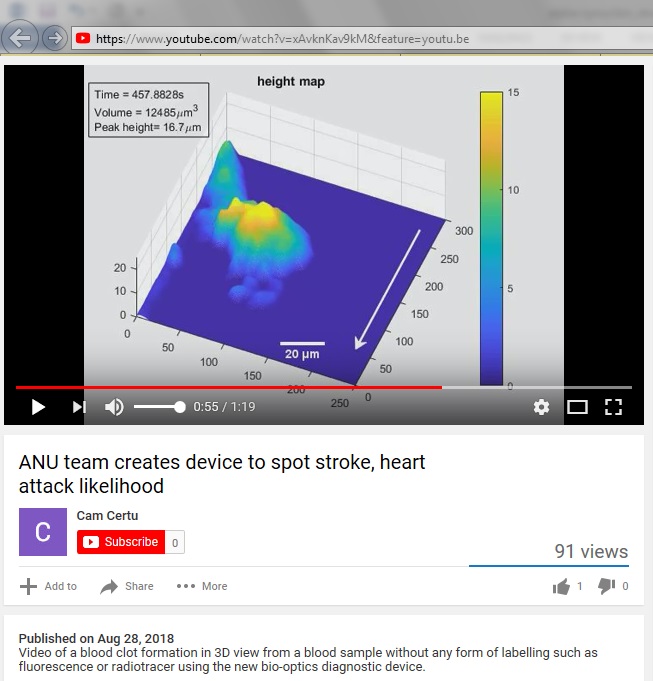博文
[转载] 澳洲国立大学研究人员用MATLAB创造血凝块形成的3D电影
||
Australian National University Researchers Create 3D Views of Blood Clot Formation

Dr. Lee and his team used MATLAB to develop the image processing and analysis software for producing real-time digital holograms of blood clots as they form.
The team wrote MATLAB scripts to automate the acquisition of image data from the DHM camera with Image Acquisition Toolbox™ at up to 50 frames per second.
Working in MATLAB with Image Processing Toolbox™, the team first developed an adaptive filtering algorithm that applies a fast Fourier transform (FFT) to retrieve phase information from the camera data. The algorithm determines the size, center, and boundaries of objects in the captured images and computes a global threshold level, which it uses to convert the intensity image to a binary image.
After applying a filter and an inverse FFT, the algorithm uses a corrective mask to compensate for optical distortions in the system. It then performs a convolution to remove noise and improve the clarity of the final image.
The team developed a user interface in MATLAB to enable biologists to interactively tune processing parameters and view results. Using MATLAB Compiler™, they packaged the interface and algorithm as a standalone application that can be used without installing MATLAB.
Experiments with three DHM setups and accompanying MATLAB software are currently running in the ANU lab. Meanwhile, the team is working on a super-resolution version of the microscope that will make it possible to capture nanoscale holograms of platelets during in vitro blood clot formation.
Sample analysis time reduced from days to hours. “Our process requires processing thousands of images—multiple gigabytes of data—for a single sample,” says Dr. Lee. “MATLAB enabled us to cut processing time for this data from days to hours by implementing a streamlined workflow in which we calibrate flow rates and other parameters before processing the data as a batch.”
Development time reduced by months. “On a project we just completed, the user interface took us six months because we were required to develop it in C,” Dr. Lee says. “With MATLAB, a similar interface would take half a day.”
Research tools and resources readily accessible. “Because ANU has a Campus-Wide License, most of our students have experience with MATLAB,” says Dr. Lee. “The ability to draw on that pool of technical proficiency, combined with access to the latest version of MATLAB and its toolboxes, is a big advantage for our program.”
https://blog.sciencenet.cn/blog-498408-1195578.html
上一篇:[转载] 多伦多大学[2018.12~2019.01]访问记
下一篇:[转载] 治疗帕金森氏症的药物也可以用来治疗(Stephen霍金的)肌肉萎缩性硬化症